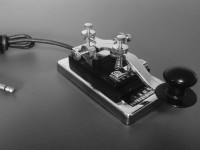Well, hello there. It was a long, dreadful, record-breaking winter here in Nova Scotia. Although most of the snow has melted, it’s still unseasonably cold. I heard on local radio today that people are calling it “springter”. My last post was in October, and since then I’ve been occupied with teaching, promoting NSCAD programs in China and chairing an academic department; things that are either not blog-worthy or worth repeating publicly.
Weather Sensing Invention
Around the time of my last post, I had stumbled upon what I think might be a new invention relating to weather sensing. With the help of Kevin Buchan, NSCAD’s research consultant, I issued a proposal to Innovacorp for an Early Stage Commercialization Fund grant to help develop a working prototype. I heard at the end of February that I didn’t get the grant, so that’s off the table for the moment. By the way, my friend and colleague Sol Nagler received funding for his “Narratives – A Geolocative Interactive Storytelling Mobile Application” project. At least, I thought he was my friend. 😉
Radio
Over the past number of years, I’ve been utilizing tiny RFM12 and RFM12B 434 MHz radio units to send and receive sensor data around the house. These units use Arduino ATMEGA 328 microcontrollers and the Jeenode Library. I hope to talk more about this long-term project in future posts.
The more I worked with these magical devices, the more interested I became in their inner workings. Specifically, I wanted to know:
- how to get the RF energy from the little circuit out to the world
- what kinds of environmental factors affect the propagation of the RF energy
- how to maximize and direct the RF energy from the sensor to a base receiver
However, in my research I was confronted with a wall of my own ignorance; as I searched for answers, more questions kept popping up. So I decided to undertake a long-term study, and as part of that plan I applied for my amateur radio license. I took the test on March 31 and received my Basic with Honours license, which allows me to use all of the HF, VHF and above amateur radio bands using standard commercially-designed and built radios. I want to be able to design and build my own transmitters, but that will have to wait until I can pass the Advanced license test. My callsign is VE1LEB. The VE1 prefix indicates my location as Nova Scotia, Canada.

So what’s the “Military Room Escape Movie Prop”? It comes from the AliExpress listing for a Chinese Army Changshu K-4 morse code key that I received in the mail yesterday. These keys have been in service in the Chinese military from the early 1960’s. It weighs one kilogram and it’s a thing of beauty! Morse code hasn’t been a requirement for amateur radio licensing in Canada for ten years, but I’m learning to send and receive anyway and hope to take the 5 wpm test in the Fall to get this function added to my certification.
So until next time, 73!